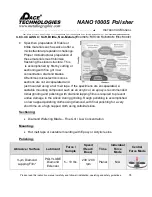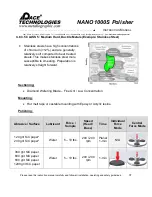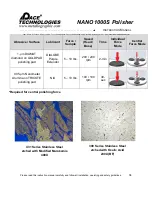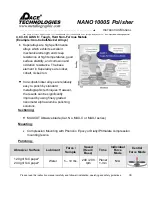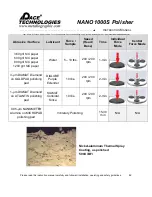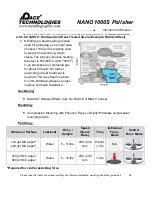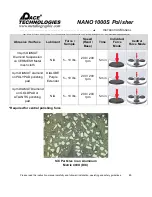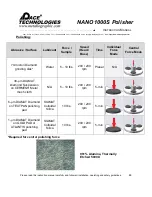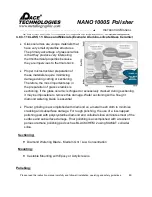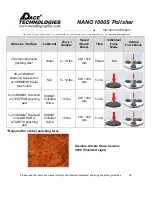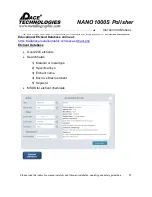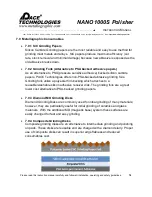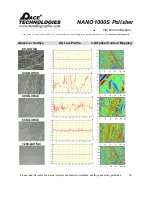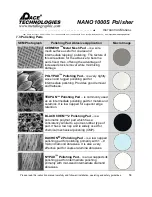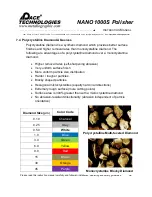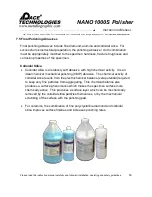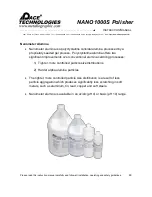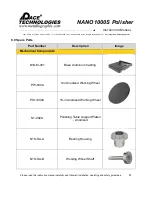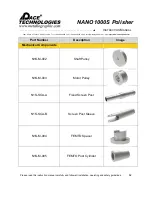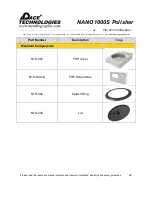
NANO 1000S Polisher
I
NSTRUCTION
M
ANUAL
- - - - - - - - - - - - - - - - - - - - - - - - - - - - - - - - - - - - - - - - - - - - - - - - - - ▲
3601 E. 34th St. Tucson, AZ 85713 USA Tel. +1 520-882-6598 Fax +1 520-882-6599 email: [email protected] W eb: https://www.metallographic.com
Please read this instruction manual carefully and follow all installation, operating and safety guidelines.
49
4.8.3.11 CLASS 11: Glass and Minerals (Example: Alumino-silicate Glass Ceramic)
Polishing:
Glass ceramics are unique materials that
have very small crystalline structures.
The primary advantage of glass ceramics
is that they produce very interesting
thermochemical properties because
they are impervious to thermal shock.
Proper microstructural preparation of
these materials require minimizing
damage during cutting or sectioning.
Therefore, the most important step in
the preparation of glass ceramics is
sectioning. If the glass ceramic is chipped or excessively cracked during sectioning,
it may be impossible to remove this damage. Wafer sectioning with a fine grit
diamond wafering blade is essential.
Planar grinding is accomplished with diamond on a metal mesh cloth to minimize
cracking and subsurface damage. For rough polishing, the use of a low-napped
polishing pad with polycrystalline diamond and colloidal silica eliminates most of the
surface and subsurface damage. Final polishing is accomplished with a resilient
porous urethane polishing pad such as BLACKCHEM 2 using SIAMAT colloidal
silica.
Sectioning:
Diamond Wafering Blade - Medium Grit / Low Concentration
Mounting:
Castable Mounting with Epoxy or Acrylic resins.

